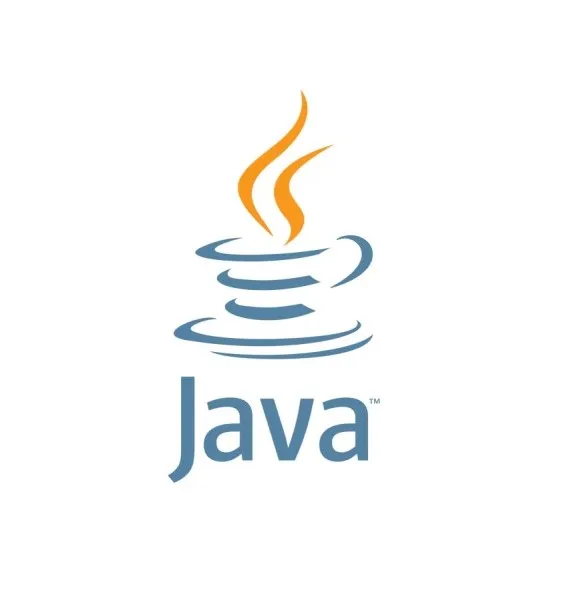Java, For IoT (Internet of things)
Java plays a significant role in the Internet of Things (IoT) ecosystem due to its platform independence, robustness, and scalability. Here’s how Java contributes to IoT:
- Platform Independence: Java’s “write once, run anywhere” philosophy makes it well-suited for IoT devices, which often have diverse hardware architectures and operating systems. Java applications can run on various devices without modification, simplifying development and deployment.
- Scalability: Java’s multithreading capabilities and scalable infrastructure make it suitable for IoT solutions handling large volumes of data from numerous connected devices. Java’s ecosystem offers robust frameworks and libraries for building scalable IoT applications.
- Security: Security is a critical concern in IoT deployments. Java provides built-in security features, such as secure coding practices, cryptographic libraries, and authentication mechanisms, which help developers build secure IoT solutions resistant to cyber threats.
- Device Management: Java-based frameworks and platforms facilitate device management in IoT deployments. These frameworks offer functionalities for device provisioning, configuration, monitoring, and remote management, simplifying the administration of large fleets of IoT devices.
- Integration with Cloud Services: Many IoT solutions leverage cloud services for data storage, analytics, and machine learning. Java’s compatibility with major cloud platforms, such as AWS, Azure, and Google Cloud, enables seamless integration between IoT devices and cloud services, allowing for advanced data processing and analysis.
- Edge Computing: Java supports edge computing, where data processing occurs closer to the data source (IoT device) rather than in centralized cloud servers. Java applications can run on edge devices, enabling real-time analytics, reduced latency, and efficient use of network bandwidth.
- Interoperability: Java’s extensive ecosystem of libraries, protocols, and APIs facilitates interoperability between IoT devices and systems. Java-based IoT solutions can communicate with devices using various protocols such as MQTT, CoAP, and HTTP, ensuring compatibility with diverse IoT ecosystems.
- Community Support: Java benefits from a large and active developer community continuously contributing to IoT-related projects, frameworks, and tools. This community support accelerates development, fosters innovation, and provides resources for solving IoT challenges.
Overall, Java’s versatility, scalability, security features, and compatibility with cloud services make it a compelling choice for developing robust and scalable IoT solutions.
Eclipse IoT. Eclipse IoT is a collection of open-source projects that provide implementations of IoT standards and protocols. It includes projects like Eclipse Paho (for MQTT), Eclipse Mosquitto (MQTT broker), Eclipse Kura (Java/OSGi-based framework for IoT gateways), Eclipse Hono (IoT messaging infrastructure), and more.
Pi4J. Pi4J is a Java library for Raspberry Pi GPIO control and hardware interfacing. It allows Java developers to interact with the GPIO pins, SPI, I2C, and serial interfaces of Raspberry Pi boards, enabling them to build IoT applications that interact with external sensors, actuators, and peripherals.
ThingSpeak Java Library. ThingSpeak is an IoT platform for collecting, visualizing, and analyzing data from sensors and devices. The ThingSpeak Java Library provides APIs for interacting with the ThingSpeak cloud service, enabling Java applications to send and retrieve data from IoT devices.
AWS IoT SDK for Java. The AWS IoT SDK for Java enables Java developers to interact with the AWS IoT platform, which includes device shadow support, MQTT messaging, and device management capabilities. It allows developers to build IoT applications that leverage AWS services for data processing, storage, and analytics.
Blynk. Blynk is a platform for building IoT applications that enables developers to create custom IoT dashboards and control IoT devices remotely. The Blynk Java library provides APIs for integrating Java applications with the Blynk platform, allowing developers to build IoT solutions with user-friendly interfaces.
Let’s review simple example of Pi4J how easy it is.
Firstly we need maven dependency:
1
2
3
4
5
6
7
8
9
10
11
12
13
14
15
16
17
18
19
20
21
22
23
24
25
26
27
28
29
30
31
32
33
34
35
36
37
38
39
40
41
42
43
44
45
46
47
48
49
50
51
52
53
54
55
56
57
58
59
60
61
62
63
64
65
66
67
68
69
70
71
72
73
74
75
76
77
78
79
80
81
82
83
84
85
86
87
88
89
90
91
92
93
94
95
96
97
98
99
100
//Let’s review simple example of Pi4J how easy it is.
//Firstly we need maven dependency:
<properties>
<!-- DEPENDENCIES VERSIONS -->
<slf4j.version>2.0.12</slf4j.version>
<pi4j.version>2.5.1</pi4j.version>
</properties>
<dependencies>
<dependency>
<groupId>org.slf4j</groupId>
<artifactId>slf4j-api</artifactId>
<version>${slf4j.version}</version>
</dependency>
<dependency>
<groupId>org.slf4j</groupId>
<artifactId>slf4j-simple</artifactId>
<version>${slf4j.version}</version>
</dependency>
<!-- include Pi4J Core -->
<dependency>
<groupId>com.pi4j</groupId>
<artifactId>pi4j-core</artifactId>
<version>${pi4j.version}</version>
</dependency>
<!-- include Pi4J Plugins (Platforms and I/O Providers) -->
<dependency>
<groupId>com.pi4j</groupId>
<artifactId>pi4j-plugin-raspberrypi</artifactId>
<version>${pi4j.version}</version>
</dependency>
<dependency>
<groupId>com.pi4j</groupId>
<artifactId>pi4j-plugin-gpiod</artifactId>
<version>${pi4j.version}</version>
</dependency>
</dependencies>
//Firstly we need to initialize a new runtime context:
var pi4j = Pi4J.newAutoContext();
//For example we can print some important information:
Platforms platforms = pi4j.platforms();
console.box("Pi4J PLATFORMS");
console.println();
platforms.describe().print(System.out);
console.println();
Let’s blink a LED example:
private static final int PIN_LED = 22;
var led = pi4j.digitalOutput().create(PIN_LED);
while (pressCount < 5) {
if (led.state() == DigitalState.HIGH) {
led.low();
} else {
led.high();
}
Thread.sleep(500 / (pressCount + 1));
}
//Here button press example:
private static int pressButtonCounter = 0;
private static final int PIN_BUTTON = 24;
var buttonConfig = DigitalInput.newConfigBuilder(pi4j)
.id("button")
.name("Press button")
.address(PIN_BUTTON)
.pull(PullResistance.PULL_DOWN)
.debounce(1000L);
var button = pi4j.create(buttonConfig);
button.addListener(e -> {
if (e.state() == DigitalState.LOW) {
pressButtonCounter++;
console.println("Button was pressed " + pressButtonCounter+ " times");
}
});
//Exit. To correctly free all resources we need to do shutdown:
pi4j.shutdown();
//To run this app on your RasperyPi you need do following. You need attach a LED, and recent Raspbian OS image with Java 11 or newer
//Build project:
mvn clean package
// And after this you will have simple file run.sh inside build folder. And after that you have console output like this:
LED high
LED low
LED high
Button was pressed 1 times
To more detail examples you can use Pi4J Project Documentation.
This was a simple example. But Pi4J is particularly interesting for Java developers working on Raspberry Pi projects. Here are some reasons why Pi4J is worth using:
- GPIO Control: Pi4J provides an easy-to-use API for controlling the GPIO (General Purpose Input/Output) pins of the Raspberry Pi. This allows developers to interact with external sensors, LEDs, motors, and other electronic components connected to the GPIO pins.
- Hardware Interfacing: With Pi4J, Java developers can interface with various hardware peripherals of the Raspberry Pi, including SPI (Serial Peripheral Interface), I2C (Inter-Integrated Circuit), and serial interfaces. This enables communication with external devices and sensors using standard communication protocols.
- Platform Independence: Pi4J is designed to be platform-independent, meaning that Java applications developed with Pi4J can run on any operating system supported by the Raspberry Pi, such as Raspbian, Ubuntu, or Windows IoT Core. This flexibility simplifies development and deployment across different environments.
- Integration with Java Ecosystem: Pi4J integrates seamlessly with the Java ecosystem, allowing developers to leverage existing Java libraries, frameworks, and tools for building Raspberry Pi projects. This includes IDEs like Eclipse or IntelliJ IDEA, build tools like Maven or Gradle, and libraries for networking, concurrency, and data processing.
- Event-Driven Programming: Pi4J supports event-driven programming paradigms, allowing developers to create responsive and asynchronous applications that react to external events, such as GPIO state changes or sensor readings. This makes it suitable for building interactive and real-time IoT applications.
- Community and Support: Pi4J benefits from an active community of developers and contributors who provide support, tutorials, and examples for getting started with Raspberry Pi development in Java. The community-driven nature of Pi4J ensures ongoing development and improvement of the library.
- Educational Purposes: Pi4J is widely used in educational settings to teach students about electronics, embedded systems, and programming. Its simplicity and ease of use make it an excellent tool for introducing beginners to the world of hardware programming using Java and Raspberry Pi.
Overall, Pi4J is a powerful and versatile library that enables Java developers to harness the capabilities of the Raspberry Pi for building a wide range of IoT, robotics, automation, and educational projects. Whether you’re a hobbyist, student, or professional developer, Pi4J offers a rich set of features for exploring the potential of Raspberry Pi hardware with Java.
Let’s create another example using Pi4J to control a servo motor connected to a Raspberry Pi. We’ll write a program that allows us to control the position of the servo motor using a potentiometer connected to an analog-to-digital converter (ADC). Here’s the code:
1
2
3
4
5
6
7
8
9
10
11
12
13
14
15
16
17
18
19
20
21
22
23
24
25
26
27
28
29
30
31
32
33
34
35
36
37
38
39
40
41
42
43
44
45
import com.pi4j.io.gpio.Pin;
import com.pi4j.io.gpio.RaspiPin;
import com.pi4j.io.gpio.GpioFactory;
import com.pi4j.io.gpio.GpioPinAnalogInput;
import com.pi4j.io.gpio.GpioPinPwmOutput;
public class ServoControl {
private static final Pin POTENTIOMETER_PIN = RaspiPin.GPIO_00;
private static final Pin SERVO_PIN = RaspiPin.GPIO_01;
public static void main(String[] args) throws InterruptedException {
// Create GPIO controller instance
final com.pi4j.io.gpio.GpioController gpio = GpioFactory.getInstance();
// Create analog input pin for the potentiometer
final GpioPinAnalogInput potentiometer = gpio.provisionAnalogInputPin(POTENTIOMETER_PIN);
// Create PWM output pin for the servo
final GpioPinPwmOutput servoPin = gpio.provisionPwmOutputPin(SERVO_PIN);
// Set the PWM range (1000-2000) for the servo
servoPin.setPwmRange(1000);
while (true) {
// Read the potentiometer value (0-1023)
int potValue = potentiometer.getValue();
// Map potentiometer value to servo PWM range (1000-2000)
int pwmValue = (int) map(potValue, 0, 1023, 1000, 2000);
// Set the servo position
servoPin.setPwm(pwmValue);
// Wait for a short time
Thread.sleep(20);
}
}
// Helper function to map a value from one range to another
private static double map(int x, int in_min, int in_max, int out_min, int out_max) {
return (double) (x - in_min) * (out_max - out_min) / (in_max - in_min) + out_min;
}
}
In this example:
- We import necessary Pi4J classes for controlling GPIO pins.
- We define the GPIO pins for connecting the potentiometer (analog input) and servo motor (PWM output).
- We create a main method where we initialize the GPIO controller and provision the GPIO pins.
- Inside the main loop, we continuously read the value of the potentiometer (0–1023) and map it to the PWM range of the servo motor (1000–2000). We then set the PWM output to control the position of the servo motor accordingly.
To run this example, make sure you have Pi4J installed on your Raspberry Pi, a servo motor connected to a GPIO pin, and a potentiometer connected to another GPIO pin (via an ADC if needed). Then compile and run the Java code on your Raspberry Pi. You should be able to control the position of the servo motor by rotating the potentiometer.
In conclusion, Pi4J offers Java developers a versatile and accessible way to interact with the GPIO pins of Raspberry Pi, enabling the creation of a wide range of IoT projects. With Pi4J, developers can easily integrate sensors, actuators, displays, and other peripherals into their Java applications, opening up endless possibilities for innovation in the IoT space.
Whether you’re a hobbyist, educator, or professional developer, Pi4J provides a robust framework for exploring hardware programming with Java on the Raspberry Pi platform. Its simplicity, platform independence, and seamless integration with the Java ecosystem make it an invaluable tool for anyone looking to dive into the world of IoT development.
By leveraging Pi4J’s features and capabilities, developers can unleash their creativity, build interactive prototypes, automate tasks, and bring their IoT ideas to life with ease. With Pi4J, the only limit is your imagination. So, grab your Raspberry Pi, fire up Pi4J, and embark on your journey to explore the exciting possibilities of IoT development with Java!

